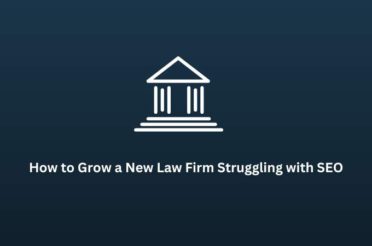A website is often the first interaction potential customers have with your brand. It serves as the digital face of your business, representing your values, services, and overall aesthetic. Therefore, business owners must ensure their sites accurately reflect their brand’s latest look and feel. If your website isn’t doing this, it’s time to consider a redesign. A well-executed redesign can significantly enhance your online presence, boost customer engagement, and improve overall business performance.
The Importance of Regular Website Redesigns
Industry experts suggest that businesses redesign their websites every 1.5 to 2.5 years. This timeframe ensures that your site remains up-to-date with evolving online goals, industry trends, and technological advancements.
Several vital indicators signal when a redesign is necessary:
- Outdated Appearance: An old-fashioned design can deter visitors and reduce credibility. When a website looks dated, it gives the impression that the business is not keeping up with the times, which can be a major turn-off for potential customers.
- Frequent Updates Needed: Constantly needing updates indicates a lack of efficiency and modernity. Investing in a comprehensive redesign might be more cost-effective and beneficial if you frequently pat up your website.
- Poor Functionality: A poorly performing site on desktop and mobile devices can frustrate users and drive them away. Given the increasing use of mobile devices for browsing, a responsive design is no longer optional but essential.
- Brand Changes Not Reflected: As your brand evolves, your website should mirror those changes to stay relevant. Your website should be a dynamic representation of your business’s growth and transformation.
- Competitor Advantage: If competitors have more attractive and functional websites, they might capture your potential customers. Staying competitive means ensuring your website is as appealing and functional as your industry rivals.
- New Business Goals: Shifts in your business strategy should be reflected in your website’s design and functionality. Whether expanding services, targeting a new market, or rebranding, your website should support these new objectives.
- Outdated Content: Keeping content fresh and relevant is crucial for engaging users and improving SEO. An outdated website can make your business appear inactive or irrelevant.
Benefits of Redesigning Your Website
Redesigning your website periodically offers several significant benefits that can directly impact your business success:
- Mobile-Friendliness
Google prioritizes mobile-friendly websites in its search rankings. A site that delivers a seamless experience across all devices enhances user satisfaction and engagement. Responsive design ensures you only need to update and maintain one version of your site, saving time and resources. This consistency also improves your SEO performance, as search engines favor websites that provide a good user experience on mobile and desktop platforms.
- Accurate Brand Representation
As your business grows and evolves, your website should reflect these changes. An updated site showcasing your brand’s latest version can make a strong impression on potential customers and accurately convey your services and values. A well-designed website tells your brand story effectively, aligning with your marketing strategies and overall brand image.
- Updated Staff Pages
Regularly updating staff or team pages is crucial because people prefer doing business with companies they feel connected to. Including current headshots and bios fosters trust and establishes a more personal connection with your audience. These pages should highlight your team’s expertise and personality, making your business more relatable and trustworthy.
- Fresh Visuals
Updating photos and other visual elements every one to three years can refresh your website’s look without needing a total redesign. This keeps the site visually appealing and engaging for repeat visitors. High-quality, updated visuals can significantly enhance user experience, making your website more attractive and professional.
- Improved SEO Rankings
Regular updates to your website with fresh, relevant content can enhance your SEO performance. Google ranks sites with up-to-date content higher, helping you stay ahead of competitors who may not update their websites as frequently. Keeping your content relevant and timely can attract organic traffic and improve your search engine visibility.
- Enhanced User Experience
A redesigned website can offer a better user experience by improving site navigation, loading speed, and overall functionality. A positive user experience can reduce bounce rates, increase time spent on your site, and ultimately lead to higher conversion rates. Modern design trends focus on simplicity, ease of use, and accessibility, all contributing to a superior user experience.
- Increased Security
Website security is a critical aspect that often gets overlooked. Outdated websites are more vulnerable to cyber-attacks and data breaches. A redesign allows you to implement the latest security protocols and protect sensitive customer information. Ensuring your website is secure can build customer trust and protect your business from potential legal and financial repercussions.
Why You Shouldn’t Wait
Failing to keep your website current can give your competitors an edge. A well-designed, modern website can attract more customers, increase engagement, and drive conversions. Implementing advanced features and adhering to the latest web design trends can significantly boost your site’s performance and overall user experience.
How Can Website Redesigning Help?
- Make Your Website Mobile-Friendly
Google favors websites that are optimized for mobile devices. A mobile-friendly website improves search engine rankings and delivers a better user experience. With most smartphone users accessing websites, ensuring your site is mobile-friendly is crucial. A responsive design adapts to different screen sizes, providing a seamless browsing experience on all devices.
- Reflect on the Latest Look of Your Brand
Your website should be a true reflection of your brand. As your business evolves, so should your website. A redesign allows you to align your website with your current branding, ensuring consistency across all marketing channels. This includes updating your logo, color scheme, typography, and overall design to match your brand identity.
- Keep Staff or Team Pages Up-to-Date
People come and go in any organization, making it necessary to regularly review and update staff pages. Visitors often look at these pages to understand the people behind the business. Updating headshots and bios keeps your website current and helps build trust and establish a personal connection with your audience.
- Ensure a Fresh Look with the Latest Photos
Visual content is a powerful tool for engaging website visitors. Regularly updating your website’s photos can keep it looking fresh and appealing. High-quality, relevant images can enhance the visual appeal of your site and make it more inviting for users. This can be achieved without a complete redesign by periodically updating key images.
- Boost Your Ranking on Google
Search engines favor websites that are regularly updated with fresh content. You can improve your SEO performance by redesigning your website and keeping it current. This includes updating blog posts, adding new services or products, and ensuring your content is relevant and informative. Regular updates signal to search engines that your site is active and provide valuable information, which can boost your rankings.
- Improve Site Performance
A website redesign provides an opportunity to enhance your site’s performance. This includes optimizing loading times, improving site navigation, and ensuring your site is compatible with the latest web standards. A faster, more efficient website can increase user satisfaction and better search engine rankings.
- Enhance Customer Engagement
An updated website can significantly improve customer engagement. Modern design elements, interactive features, and clear calls to action can encourage users to spend more time on your site and take desired actions, such as purchasing or filling out a contact form. Engaging content and an intuitive user interface can increase conversion rates and customer retention.
Conclusion
In conclusion, a well-designed website is essential for any business to maintain a solid online presence and stay competitive in today’s digital landscape. Regularly redesigning your website every two to three years ensures it remains visually appealing, functional, and aligned with your evolving brand and business goals. Doing so can enhance mobile-friendliness, accurately represent your brand, keep staff pages up-to-date, refresh visual content, improve SEO rankings, boost site performance, and increase customer engagement.
Neglecting to update your website can result in lost opportunities and allow competitors to gain an edge. Therefore, investing in a website redesign is not just about aesthetics—it’s a strategic move to drive growth, improve user experience, and secure your business’s future success.
If you’re ready to revamp your website and take your online presence to the next level, consider partnering with a professional web design agency like Blue Astral. Our team of experts can help you create a dynamic, user-friendly, and SEO-optimized website that genuinely reflects your brand’s potential and meets your business objectives. Contact us today to get started on your website redesign journey.









